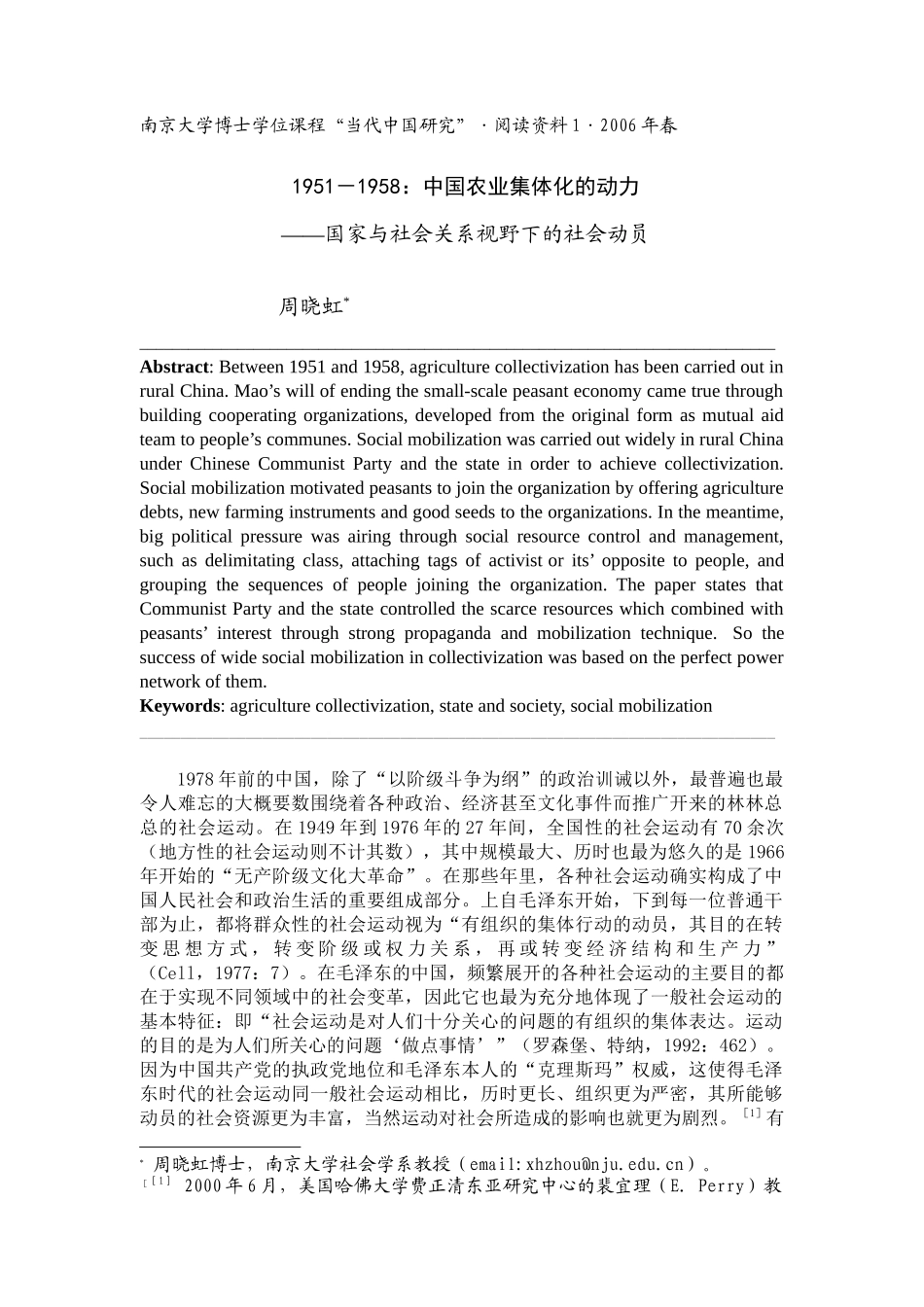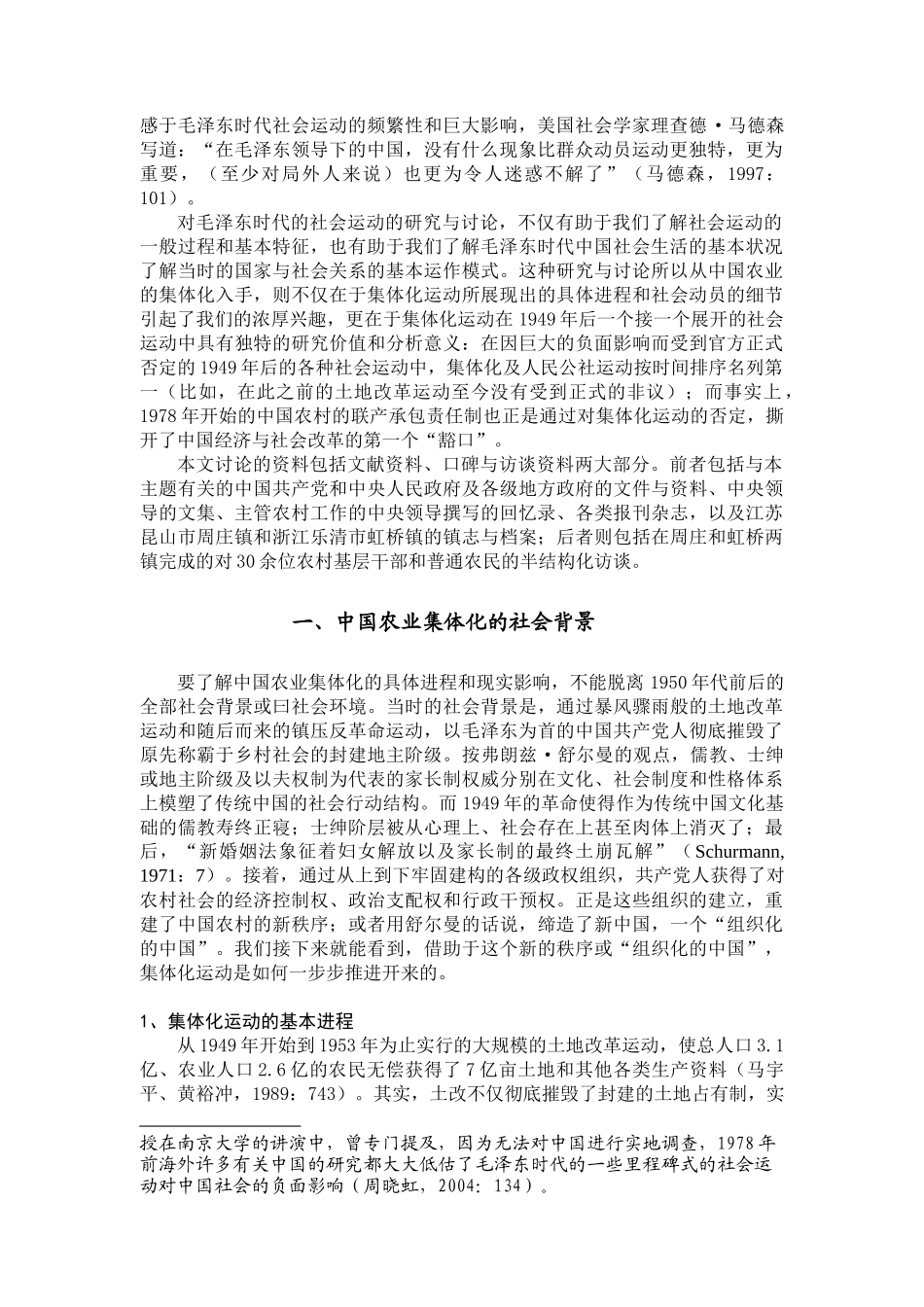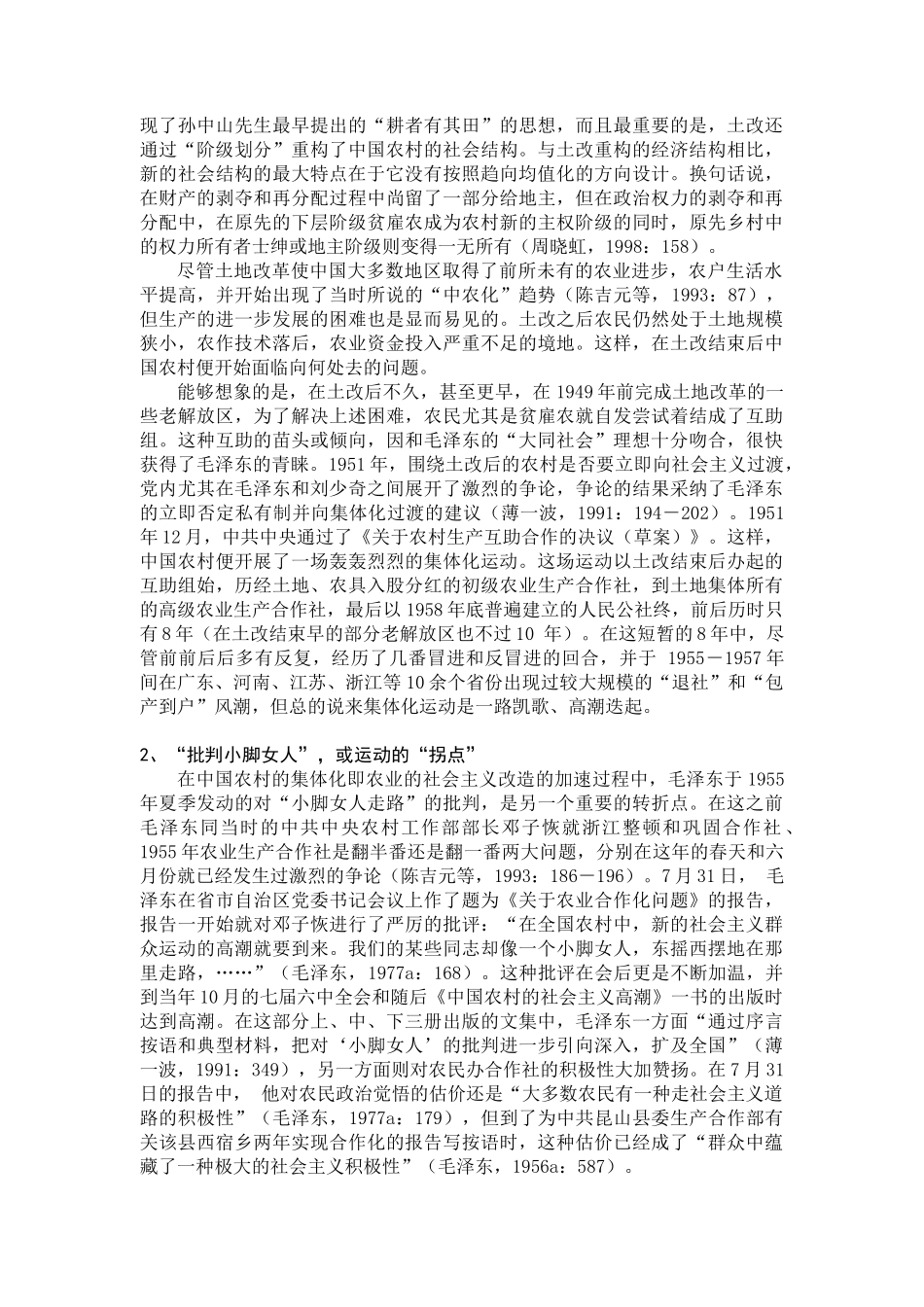南京大学博士学位课程“当代中国研究”·阅读资料 1·2006 年春1951-1958:中国农业集体化的动力——国家与社会关系视野下的社会动员 周晓虹*______________________________________________________________________________Abstract: Between 1951 and 1958, agriculture collectivization has been carried out in rural China. Mao’s will of ending the small-scale peasant economy came true through building cooperating organizations, developed from the original form as mutual aid team to people’s communes. Social mobilization was carried out widely in rural China under Chinese Communist Party and the state in order to achieve collectivization. Social mobilization motivated peasants to join the organization by offering agriculture debts, new farming instruments and good seeds to the organizations. In the meantime, big political pressure was airing through social resource control and management, such as delimitating class, attaching tags of activist or its’ opposite to people, and grouping the sequences of people joining the organization. The paper states that Communist Party and the state controlled the scarce resources which combined with peasants’ interest through strong propaganda and mobilization technique. So the success of wide social mobilization in collectivization was based on the perfect power network of them. Keywords: agriculture collectivization, state and society, social mobilization______________________________________________________________________________1978 年前的中国,除了“以阶级斗争为纲”的政治训诫以外,最普遍也最令人难忘的大概要数围绕着各种政治、经济甚至文化事件而推广开来的林林总总的社会运动。在 1949 年到 1976 年的 27 年间,全国性的社会运动有 70 余次(地方性的社会运动则不计其数),其中规模最大、历时也最为悠久的是 1966年开始的“无产阶级文化大革命”。在那些年里,各种社会运动确实构...


